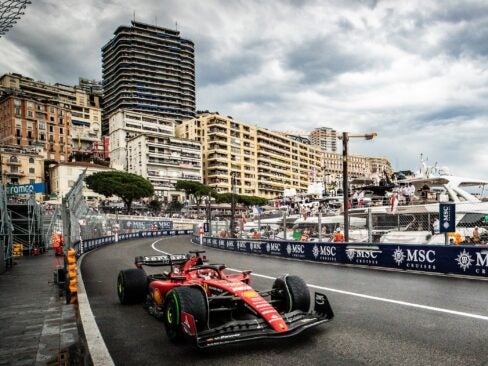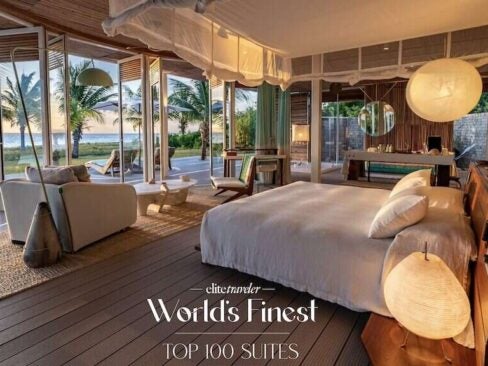In the galaxy of gemstones, diamonds constitute a solar system all their own. They have been mined for millennia, representing beauty and prestige for ancient Indian dynasties, European royal families, and modern-day collectors from Antwerp to Auckland.
The prettiest carbon allotropes of them all, diamonds also present a strong argument against ageism: at 3 billion years old, the average diamond might just be the oldest thing you wear.
Elderly status is certainly not slowing them down. Throughout fiscal fluctuations and large-scale demographic shifts, the market for diamonds continues to grow. Following the global economic crisis in 2008, diamond demand rebounded in spades, pushing prices to record levels in 2011. Boston-based global consulting firm Bain & Company forecasts that the international demand for natural diamonds will increase at an average annual rate of 5.9 percent through 2020.
Currently, the US is the largest consumer of polished diamonds, thanks in no small part to gemstone juggernaut New York City. A whopping 50 percent of diamond sales worldwide take place in New York, where annual diamond sales can approach $34 billion.
But new markets like the United Arab Emirates, India and China are rapidly emerging. Bain & Company predicts that India and China will overtake the United States as the top consumers of diamonds by 2020, with a 50 percent estimated increase in incremental global demand.
Historically, most of the world’s premier diamonds – and the majority of those on our list – were discovered in mines in South Africa and India. Destinations like Canada, Brazil and Australia have recently uncovered incredible natural resources as well, and are pursuing elevated standards of authenticity and mining conditions.
In late 2012, Russia announced it had discovered an immense diamond source beneath a 62-mile-wide asteroid crater in Siberia. The 35 million-year-old impact site, named Popigai Astroblem, is estimated to have approximately ten times as much hard diamond material than what exists in current global reserves.
As new resources and markets emerge, we took a closer look at the most expensive diamonds ever sold. From the pink and colorless sparklers upending auction records in Hong Kong and Geneva, to the deep blue majesty of the historic Hope Diamond, the world’s premier stones vary in size, color and origin.
What they have in common is timeless beauty and unparalleled international value. How many other 3-billion-year-old carbon allotropes can say that?
Click through to see the 9 Most Expensive Diamonds.
 The Archduke Joseph, $21.1 million
The Archduke Joseph, $21.1 million
In November 2012, this 76.02-carat diamond set a new record for the most expensive colorless diamond per carat ever sold at auction. Originally discovered in the Golconda mines in India, the cushion-shaped diamond was named for Austria’s Archduke Joseph August, the great-grandson of a Roman emperor and a French king.
The Perfect Pink, $22.9 million
This rectangular, emerald-cut diamond was nicknamed “perfect pink” for its intense color. Discovered in India, it weighs in at 14.23 carats. In 2010, Christie’s Hong Kong sold the Perfect Pink to an anonymous buyer after an intense bidding war. At the time of sale, Christie’s reported that it had auctioned only 18 pink diamonds larger than 10 carats in its 244-year history.
The Wittlsbach-Graff, $24.3 million
This deep blue, 31.06-carat stone has a royal past. In the 17th Century, Spanish king Philip IV included it in his daughter’s dowry, after which it became part of the crown jewels of both Austria and Bavaria.
In 2008, English jeweler Laurence Graff purchased the stone, then called der Blaue Wittelsbach, from Christie’s London. He worked with a diamond cutter to remove all impurities, and renamed it the Wittelsbach-Graff.
graff.com
The Pink Star, $25 million
Weighing in at 59.60 carats, The Pink Star, originally known as, Steinmetz Pink is the largest diamond to be categorized as Fancy Vivid Pink by the Gemological Institute of America. Owned by the Geneva-based Steinmetz Diamond Group, the stone was presented to the public at a Monaco ceremony in May 2003, then loaned to the Smithsonian’s National Museum of Natural History later that year.
As part of Smithsonian’s 2003 “The Splendor of Diamonds” exhibit, the Steinmetz Pink was displayed alongside six other exceedingly rare diamonds, including the Heart of Eternity and the Moussaieff Red, the world’s largest Fancy Red diamond. The diamond is now held at Sothebys.
The Princie, $39.3 million
In April 2013, when Christie’s New York City sold this rare pink diamond to an anonymous buyer, its lofty price made it the second-most expensive jewel sold at auction.
Discovered some 300 years ago in India’s Golconda mines, the 34.65-carat stone once belonged to an Indian prince in Hyderabad. It was named “Princie” centuries later, after a young European guest at a Van Cleef & Arpels party in Paris in 1960.
The Graff Pink, $47.2 million
The 24.78-carat, emerald-cut diamond was owned by Harry Winston for 60 years. In 2010, the Fancy Intense Pink stone was mounted on a platinum ring and sold by Sotheby’s Geneva. David Bennett, director of the international jewelry department at Sotheby’s, reported, “I cannot exaggerate just how rare this stone is. This sale is one of the most exciting of my 35-year career.”
Laurence Graff purchased what is now called the Graff Pink Diamond for $47.2 million, helping Sotheby’s set a record for the most expensive jewel ever sold at auction.
The De Beers Centenary Diamond, $100 million
A flawless, colorless stone, the De Beers Centenary Diamond was discovered in South Africa’s Premier Mine in 1986. Named to commemorate the 100th anniversary of De Beers Consolidated Mines, it was first presented to the public in its 599-carat, uncut form in 1988.
De Beers then spent three years cutting the Centenary Diamond, unveiling it as a 273.85-carat, modified heart-shaped stone in February 1991. It was displayed in the Tower of London for several years thereafter, and is now privately owned.
The Hope Diamond, $350 million
Possibly the world’s best-known gemstone, the Hope Diamond’s story begins in the 17th century. A French merchant traveler sold an uncut diamond he described as having “a beautiful violet” color to King Louis XIV. The stone was cut and named Le Bleu de France.
It changed hands several times throughout the following 200 years, eventually landing in the private collection of the English financier for whom it is now named, Henry Philip Hope, in 1830. It was later sold to Harry Winston, who ultimately bequeathed it to the Smithsonian in 1958.
At 45.52 carats, the diamond is classified as Fancy Dark Grayish-Blue. It remains a premier attraction at the Smithsonian Institution.
The Cullinan, $400 million
The largest rough diamond ever discovered, this white stone was found in magnate Sir Thomas Cullinan’s South African mine in 1905. It was originally discarded by a hasty mine manager who figured it was far too large to be anything other than a crystal.
Recovered and re-gifted to King Edward VII in 1907, the 3,106.75-carat stone was cut into nine polished gemstones that became part of the Crown Jewels of the United Kingdom. These include the Great Star of Africa, which weighs over 530 carats and was mounted on the head of the British Crown’s Sceptre of the Cross.
Seven of the nine Cullinan diamonds were displayed at Buckingham Palace in 2012, in celebration of the Queen’s Diamond Jubilee.

















